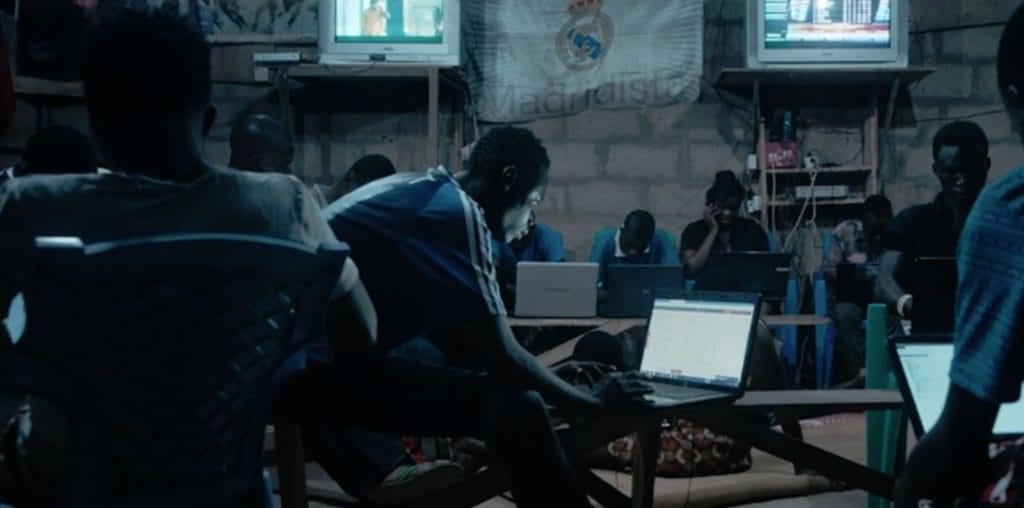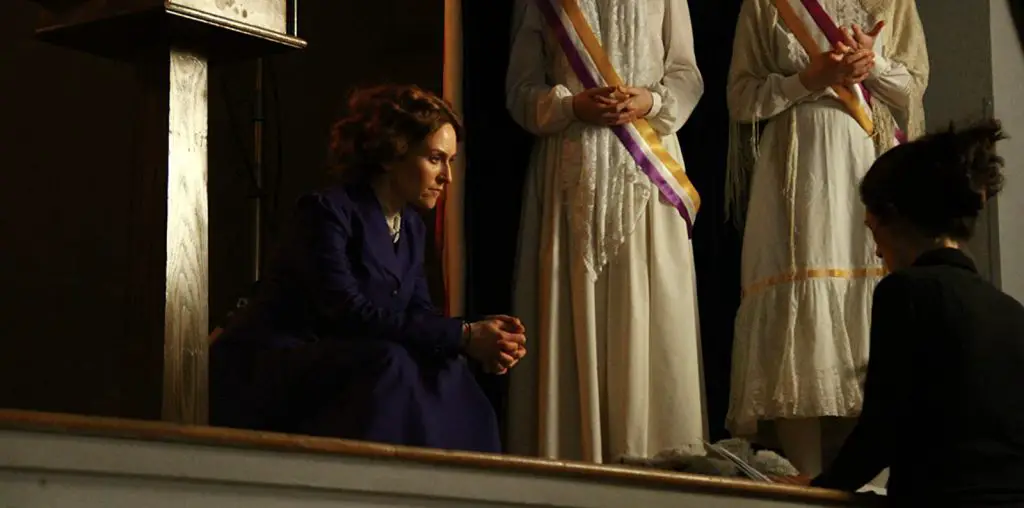
What inspiration led you to some of the bizarre sequences like the interstellar dance contest or the restroom hoedown?
Those are the most rugged dance scenes you’re ever likely to see. The interstellar dance contest was written to give an outpost sensibility to a musical. The restroom scene was inspired by something that happened when I was a young teen. I was working as a holiday temp at Sear’s. I went into the bathroom to deficate. There was no door on the stall. Somewhere into the process a fat old man came in to wash his hands at the sink directly across from me. He stood staring at my lap as he dried his hands on paper towel after paper towel. At first I thought, maybe he can’t see me, but as it went on, I realized he was looking at my dick. I was so pissed off it must have looked like a tator-tot. I was in no position to start wiping or stand up. It was a very strange trap. I said “Get the f**k out of here” and he did.
What was your thinking behind the Blueberry Pirate and what is the story behind the actor?
I have a friend named Lawrence, who when we were young, I would introduce as Larry Blueberry. I did this because he hated the name. That’s why it was funny. When I was creating a friend for Samuel Curtis, I wanted to honor my old friend so I called him Larry Blueberry, The Blueberry Pirate. This gave the character an occupation that made sense in his world. He was an interplanetary fruit thief, and somewhat of a celebrity. Sort of like a Robin Hood. Samuel Curtis is a low-end version of The Blueberry Pirate, but you could see how their paths would have been the same at some point. I cast Josh Taylor toward the end of the audition process. He’s one of the producers. He had produced plays and documentaries before this, but most of his background was in acting. He was not what I was originally looking for, but after seeing what I was originally looking for I realized he was the better choice.
What problems did you run into during production? Any unique production war stories?
Production was easy. Post-production is where all of the little nit-picking problems started. It was as if production was New York, and post was California. In production, if someone f****d up, you could tell them so, and they’d deal with it. In post, if you told someone they f****d up, they would say, “Hey man, I thought you were cool.”
How was the film received at the Sundance premiere?
After the first screening a woman came up to me with tears in her eyes, saying it was the best movie she’d ever seen. At the same time, Josh was in the hall listening to a woman passionately expressing how much she hated it. Most people really love it, but the people who don’t like it really don’t like it.
Is there any advice that you might offer to filmmakers seeking distribution theatrically?
There aren’t that many screens in the world, and every big company wants them, and is willing to pay for them. Documentary filmmakers have the right idea. Put your film under your arm, and go from town to town showing it yourself. That will also educate you on what distributors do. If you ever do business with them, it will be important to have that information and experience. When we got back from Sundance, we came home without any distribution, so we booked a West Coast tour where our band would play at a club one night, and the film would play a theatre the next. Then we’d move to the next town and do the same. It stayed in the public eye and people became interested. Also, learn how to get the word out. I’m still learning.
This is a really important question — how do you shoot nude scenes?
The closest thing to a nude scene that I ever shot was me sitting on a toilet. Dawn slapped together a flesh-colored thong. It was like wearing a wire cheese cutter.
Did the film change much in the editing phase?
A few things needed some changing. They made themselves known through the edit, but overall the film basically stayed true to the screenplay. Our editor was Pete Beaudreau. He had the patience of a saint. He’s the younger brother of The Billy Nayer Show’s guitar player and co-composer of the film’s soundtrack, James Beaudreau.
What are some of the scenes you had to cut?
We didn’t use a lot of the shots, but we didn’t really cut any scenes.
Can you give me a breakdown of a timeline for the making of the movie?
From writing the screenplay to the first screening took six years. The first few years was me doing everything I could without money. I wrote, rewrote, wrote songs, drew storyboards, and rewrote based on what I learned from the storyboards. Then I cut and pasted the script to the storyboard. I didn’t have a computer, so I used real paste and paper. That took a while. Then Bobby and I sent out copies to people. Nothing ever came of it. Then we met Josh and shortly after began pre-production. Recording the basic tracks for the soundtrack was the first thing we did. The actual shooting took 27 days. From pre-production to first screening took about a year.
Tell me what you’re working on now.
Right now I’m writing a screenplay about werewolf hunters and writing music for The Billy Nayer Show’s 6th CD. We’ve just released the soundtrack for The American Astronaut. That’s keeping us busy as well.
Get more Cory by visiting his band’s web site The Billy Nayer Show and the official site for American Astronaut.
Check out FILMTHREAT.com’s INTERVIEW ARCHIVES and read hundreds of fascinating in-depth interviews with directors, filmmakers, actors and celebrities from the world of film!

